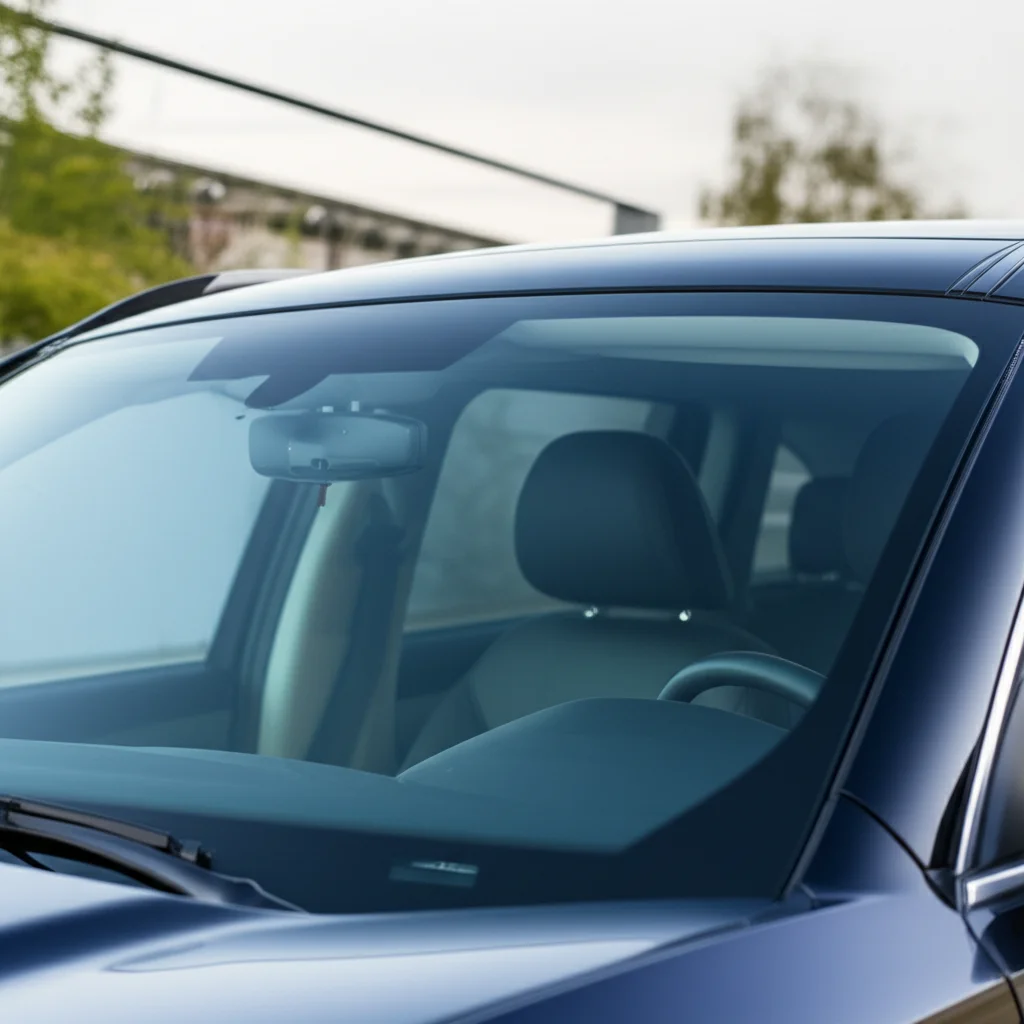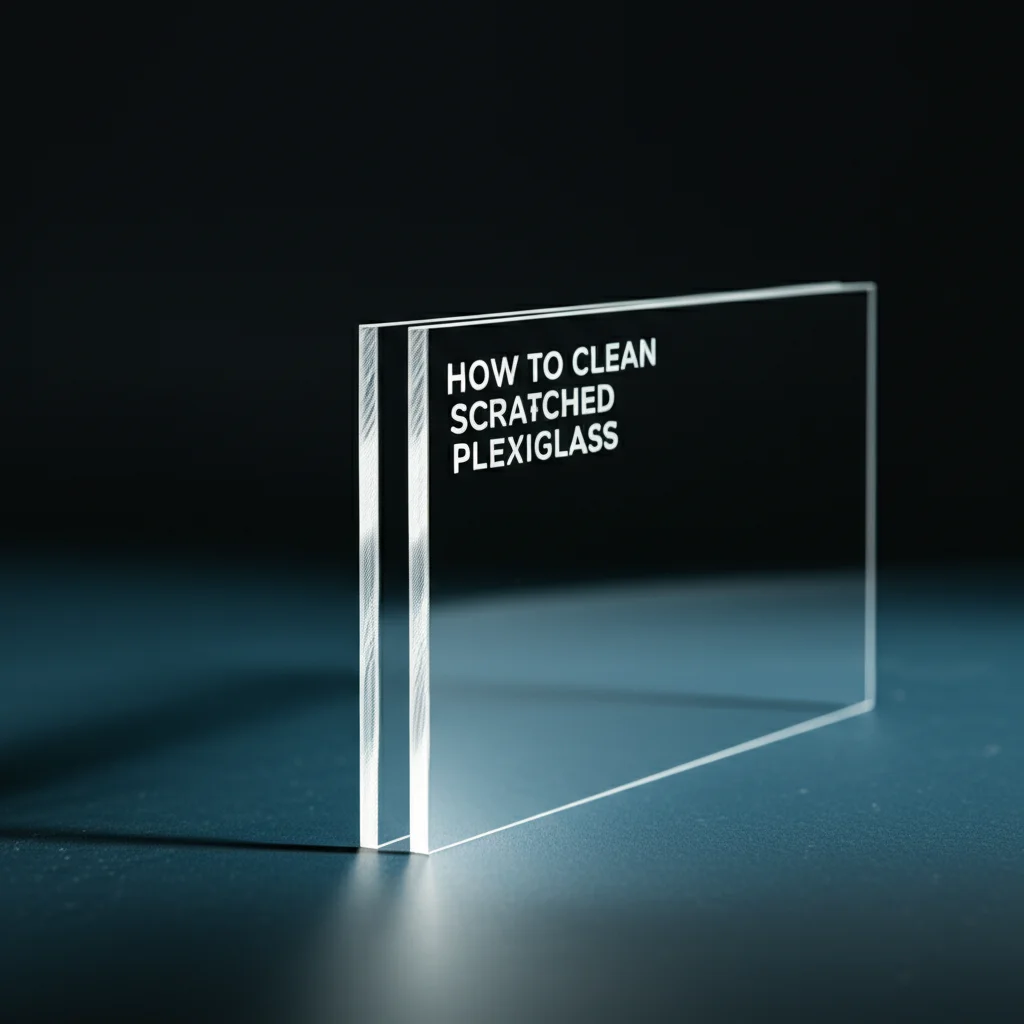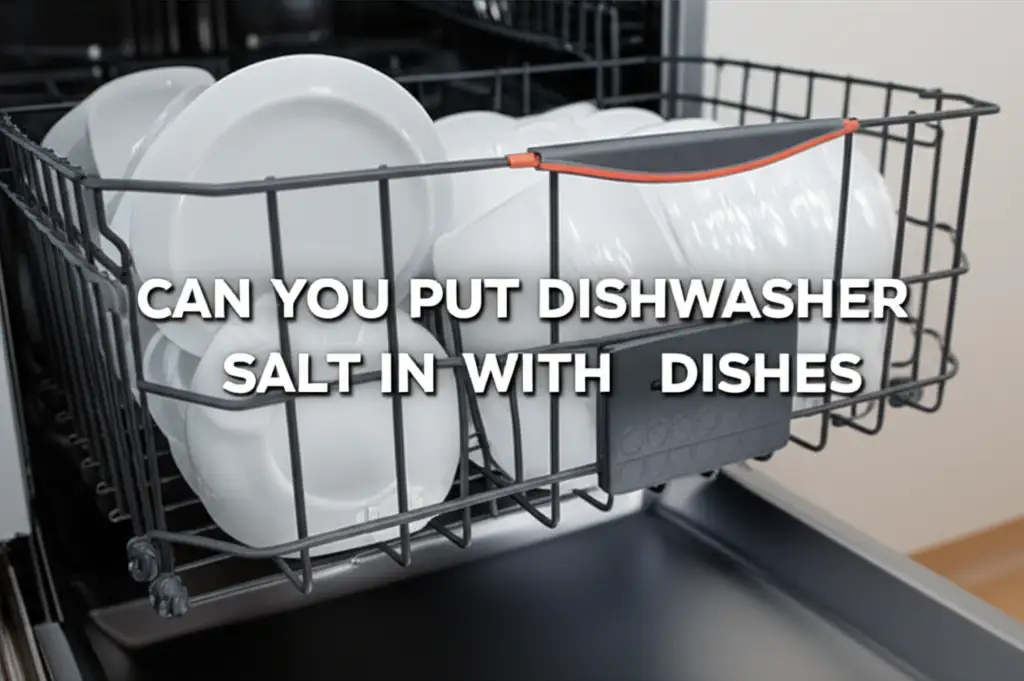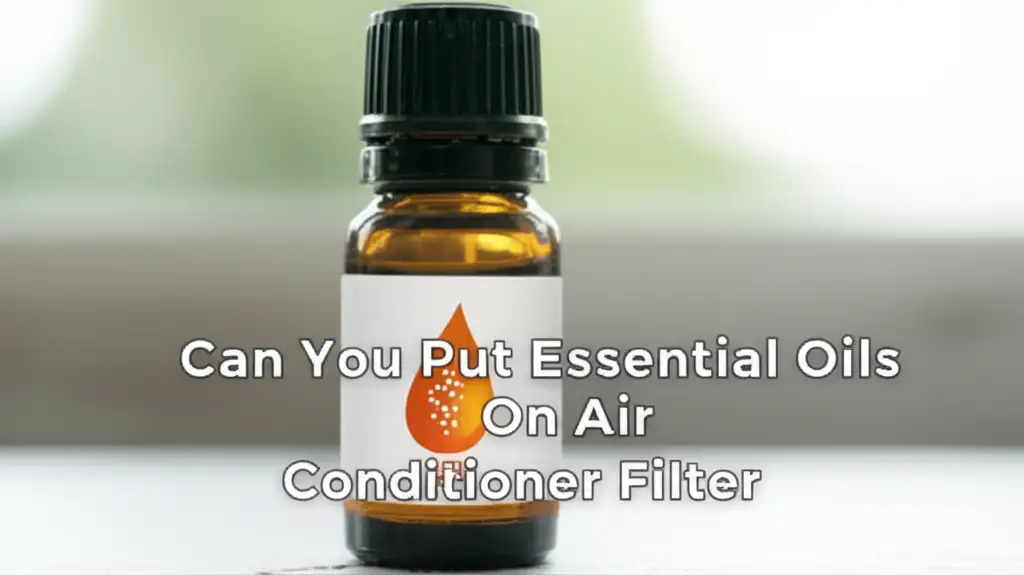· Todd Martin · Automotive Care & Home Maintenance · 19 min read
How To Clean Plastic Windshield

Restore Clear Vision: How to Clean Plastic Windshields Safely
Have you ever looked through a plastic windshield only to find your view obscured by dirt, streaks, or a persistent haze? Plastic windshields offer durability and light weight, but they scratch easily and can cloud over time. Knowing how to clean plastic windshield surfaces correctly helps maintain clarity and extends their lifespan. Harsh chemicals or abrasive materials can cause irreversible damage. This guide shows you safe, effective methods to clean and care for various plastic windshields. We cover everything from routine cleaning to tackling stubborn haze and minor scratches.
Takeaway
To clean a plastic windshield, remember these key steps:
- Rinse First: Always remove loose dirt with water.
- Use Gentle Solutions: Opt for mild soap or specialized plastic cleaners.
- Soft Cloths Only: Use microfiber towels to prevent scratches.
- Avoid Harsh Chemicals: Ammonia, alcohol, and glass cleaners damage plastic.
- Protect After Cleaning: Apply a UV protectant or plastic polish.
A plastic windshield requires gentle cleaning methods. Use mild soap and water with a soft microfiber cloth. Rinse loose dirt first. Avoid abrasive cleaners or harsh chemicals like ammonia. Always dry with a clean, soft cloth. This method prevents scratches and maintains clarity.
Understanding Plastic Windshields: Types and Vulnerabilities
Plastic windshields are common on many vehicles and equipment. These include golf carts, motorcycles, ATVs, boats, and even some older car models. The two main types are acrylic (Plexiglas) and polycarbonate (Lexan). Each material has unique properties. Acrylic is clearer but more brittle. Polycarbonate is stronger and more impact-resistant, yet it scratches more easily.
Both types of plastic are vulnerable to scratching. They also degrade when exposed to harsh chemicals. UV radiation from the sun causes yellowing and hazing over time. Regular and proper cleaning extends the life of these windshields. It also ensures clear visibility for safety. Knowing your specific plastic type can guide your cleaning choices. However, most gentle cleaning methods work for both. Always prioritize soft materials and mild cleaners.
The Differences Between Acrylic and Polycarbonate
Acrylic plastic is generally clearer than polycarbonate. It holds its transparency better over time. However, acrylic shatters more easily under impact. Polycarbonate is extremely tough. It resists shattering, making it ideal for high-impact applications. Despite its strength, polycarbonate is softer. It scratches more readily than acrylic. This means extra care is necessary during cleaning. Both materials react poorly to ammonia-based cleaners. These cleaners can cause crazing or cracking.
Identifying your windshield type is helpful. If you are unsure, err on the side of caution. Treat it as the more sensitive material. This means always using the gentlest approach. This ensures you avoid potential damage. Proper care keeps your view unobstructed and your plastic windshield looking new.
Essential Tools and Materials for Plastic Windshield Cleaning
Having the right tools is crucial for effective and safe plastic windshield cleaning. Using the wrong materials can cause scratches or permanent damage. We want to avoid these issues. Gather everything before you start. This makes the cleaning process smooth and efficient.
What You Will Need
- Two Buckets: One for soapy water, one for clean rinse water.
- Garden Hose or Spray Bottle: For rinsing loose dirt.
- Mild Soap: Dish soap (like Dawn) or a dedicated automotive soap. Look for pH-neutral formulas.
- Microfiber Cloths (multiple): These are soft, absorbent, and non-abrasive. Use at least two – one for washing, one for drying.
- Soft Sponge or Wash Mitt: For applying soapy water. Ensure it is free of debris.
- Distilled Water (optional): Helps prevent water spots, especially in hard water areas.
- Plastic Polish (optional but recommended): For removing minor scratches and restoring clarity.
- UV Protectant (optional but recommended): Protects against sun damage and prevents future yellowing.
Avoid paper towels or rough cloths. These can scratch the soft plastic surface. Never use abrasive cleaners, household glass cleaners, or products with ammonia or alcohol. These chemicals degrade plastic over time. They cause hazing, cracking, or discoloration. Stick to products designed for plastics or gentle, pH-neutral options. Always choose safety and gentle care for your plastic windshield.
Step-by-Step Guide to Cleaning Your Plastic Windshield
Cleaning a plastic windshield requires a gentle touch and specific steps to prevent damage. Follow this guide carefully for the best results. I always make sure to take my time during this process. Rushing can lead to accidental scratches or missed spots.
Step 1: Pre-Rinse to Remove Loose Debris
Begin by rinsing the entire plastic windshield with water. Use a garden hose with low pressure or a spray bottle. This step is vital. It removes loose dirt, dust, and grime. If you skip this, rubbing these particles during washing can cause scratches. Work from top to bottom. Make sure all large debris washes away. This prepares the surface for a deeper clean. Think of it as a pre-wash for your delicate plastic.
Step 2: Prepare Your Gentle Cleaning Solution
Fill one bucket with warm water and add a few drops of mild dish soap. I prefer a soap that is gentle and clear. Stir the water gently to create suds. Do not use too much soap. A small amount goes a long way. Make sure the solution is well mixed. This ensures even cleaning power. Avoid using harsh detergents or all-purpose cleaners. They can strip protective coatings or damage the plastic itself.
Step 3: Gently Wash the Plastic Surface
Dip a clean, soft microfiber cloth or wash mitt into the soapy water. Start washing the windshield in small sections. Use light pressure and straight, overlapping strokes. Do not scrub in circles. This can create swirl marks. Rinse your cloth frequently in the clean water bucket to remove dirt. This prevents spreading grime back onto the windshield. Be patient. Work systematically to cover the entire surface. This gentle approach protects the plastic.
Step 4: Rinse Thoroughly
After washing, rinse the windshield thoroughly with clean water. Use your hose or spray bottle again. Ensure all soap residue washes away completely. Soap left behind can dry and leave streaks or a film. This step is just as important as the washing itself. I usually rinse until the water runs clear and no suds are visible. A clean rinse means a clear finish.
Step 5: Dry with a Clean Microfiber Cloth
Immediately dry the plastic windshield using a fresh, dry microfiber cloth. Gently blot the surface or wipe in one direction. Avoid rubbing vigorously. This prevents water spots and streaks. Using a separate, clean cloth for drying ensures no dirt from washing gets transferred back. Make sure the cloth is clean and lint-free. A completely dry surface helps reveal any remaining haziness or issues.
Following these steps ensures a clean and streak-free plastic windshield. Consistency is key for maintaining its clarity. This also helps prolong its life.
Tackling Stubborn Issues: Haze, Yellowing, and Minor Scratches
Sometimes, a simple wash is not enough. Plastic windshields can develop haze, yellowing, or minor scratches over time. These issues need more specific treatments. Addressing them improves clarity significantly. It also extends the usable life of your windshield.
Removing Haze and Light Scratches with Plastic Polish
Haze and light scratches often come from UV exposure or improper cleaning. A specialized plastic polish can work wonders. This polish contains very fine abrasives. They gently remove a thin layer of oxidized or damaged plastic.
How to use plastic polish:
- Clean First: Ensure the windshield is completely clean and dry.
- Apply Polish: Put a small amount of plastic polish onto a clean microfiber applicator pad.
- Buff Gently: Rub the polish onto the affected area using a circular motion. Apply light to moderate pressure.
- Work in Small Sections: Polish one small area at a time. This allows the polish to work effectively.
- Wipe Off Excess: Use a separate, clean microfiber cloth to wipe away any residue.
- Repeat if Needed: For deeper haze or scratches, you may need to repeat the process. Always check your progress after each application.
Products like Novus Plastic Polish or Meguiar’s PlastX are popular choices. They restore clarity and shine. This is similar to how to clean plastic headlight covers. The principles of gentle abrasion apply.
Addressing Yellowing and Oxidation
Yellowing is a common problem caused by long-term UV exposure. It is a sign of plastic oxidation. While plastic polish can help with mild yellowing, severe cases might need stronger methods. Some kits include sanding pads with progressively finer grits. These remove the oxidized layer.
Process for severe yellowing:
- Wet Sanding (if necessary): Start with a high-grit sandpaper (e.g., 1000-grit) designed for wet sanding. Use water liberally. Work in small, controlled sections.
- Progress to Finer Grits: Move to progressively finer grits (e.g., 2000-grit, 3000-grit). This step refines the surface and removes sanding marks. The windshield will look hazy before polishing.
- Polish Extensively: After sanding, apply plastic polish as described above. Polish until clarity is restored. This step is crucial. It brings back the shine.
This process is more intensive. It requires patience and careful execution. However, it can save you the cost of replacement. For general haze, how to clean windshield haze can offer further insights, but specifically focus on plastic-safe methods.
When to Seek Professional Help
Some damage might be too severe for DIY repair. Deep gouges, extensive cracking, or severe, widespread hazing often fall into this category. If DIY methods do not yield satisfactory results, consider professional restoration services. They have specialized equipment and expertise. They can sometimes fix issues that are beyond home repair. Professionals can also advise on replacement options if needed.
Protecting Your Plastic Windshield from Future Damage
Prevention is always easier than repair. Protecting your plastic windshield after cleaning helps maintain its clarity and extends its life. This also reduces the frequency of intensive cleaning. It prevents common issues like yellowing and hazing.
Applying a UV Protectant
Ultraviolet (UV) rays from the sun are a primary cause of plastic degradation. They lead to yellowing, hazing, and brittleness. Applying a UV protectant acts as a shield. Many plastic polishes already include UV inhibitors. However, a dedicated UV protectant offers an extra layer of defense.
How to apply UV protectant:
- Clean Surface: Ensure the windshield is perfectly clean and dry.
- Apply Product: Spray or wipe the UV protectant onto the plastic. Follow the product’s instructions for application.
- Even Coverage: Ensure an even coating across the entire surface.
- Cure Time: Allow the product to cure as per instructions. Some require wiping off excess, others fully absorb.
Reapply UV protectant regularly, especially if your vehicle or equipment is often outdoors. This proactive step significantly slows down the aging process.
Using Protective Coatings or Waxes
Beyond UV protectants, some specialized waxes or ceramic coatings exist for plastics. These products create a slick surface. This repels water, dirt, and grime. They make future cleaning much easier. They also add a layer of physical protection against minor abrasions.
Benefits of protective coatings:
- Water Repellency: Rain beads up and rolls off, improving wet weather visibility.
- Easier Cleaning: Dirt and grime stick less. This means lighter cleaning.
- Minor Scratch Resistance: Adds a sacrificial layer against light scratches.
- Enhanced Shine: Provides a deeper gloss to the plastic.
Always choose products specifically formulated for plastics. General car waxes might not bond well or could contain ingredients harmful to plastic. Products for how to clean clear plastic often include these protective qualities. For specific vehicles, remember that how to clean atv plastic or how to clean plastic windows on a boat also stress the importance of protection.
Proper Storage and Covering
If possible, store vehicles or equipment with plastic windshields indoors. A garage or shed provides the best protection from the elements. If outdoor storage is necessary, use a cover. A good quality cover protects against rain, dust, and direct sunlight. It prevents the accumulation of dirt. It also shields from harmful UV rays. This simple action can greatly extend your windshield’s clarity. It reduces the need for frequent deep cleaning.
Common Mistakes to Avoid When Cleaning Plastic Windshields
Cleaning plastic windshields seems straightforward. However, many common mistakes can lead to damage. Understanding these pitfalls helps you protect your investment. I have seen many people make these errors. Avoiding them ensures your windshield stays clear.
Using Abrasive Materials
One of the biggest mistakes is using abrasive materials. This includes paper towels, rough cloths, or sponges with scrubbing pads. These materials cause tiny scratches on the soft plastic surface. Over time, these small scratches accumulate. They lead to a hazy, dull appearance. Always stick to clean, soft microfiber cloths. They are gentle yet effective at lifting dirt.
Applying Harsh Chemicals
Many household cleaners are terrible for plastic. Ammonia-based glass cleaners are a prime example. Ammonia can cause crazing. This refers to a network of fine cracks within the plastic. Alcohol-based cleaners can also dry out and damage plastic. Solvents like acetone, paint thinners, or gasoline will melt or permanently cloud plastic. Stick to mild soap and water or cleaners specifically labeled “plastic-safe.” I always check labels carefully before using any product.
Cleaning a Dry or Dirty Surface
Never wipe a dry, dusty plastic windshield. The dust particles act like sandpaper. Wiping them across a dry surface creates scratches. Always pre-rinse the windshield with water. This removes loose dirt before any physical contact. This simple step prevents significant damage. It is a fundamental rule for any delicate surface cleaning.
Scrubbing Too Hard
Even with the right cloth, excessive pressure can cause issues. Scrubbing too hard can still create micro-scratches. It might also spread dirt particles around more effectively. Use light, gentle pressure. Let the cleaning solution do most of the work. Patience and a soft touch yield the best results.
Leaving Water Spots
Allowing water to air dry on the windshield can leave mineral deposits. These are called water spots. They are especially noticeable in areas with hard water. Dry the windshield immediately after rinsing. Use a clean, dry microfiber cloth. This prevents spots and maintains a streak-free finish.
Skipping Protection
After cleaning, neglecting to apply a protectant is a missed opportunity. Without UV protection, the plastic remains vulnerable. It will yellow and haze faster. A protective layer shields the plastic from sun damage. It also makes future cleaning easier. This final step is crucial for long-term clarity.
By avoiding these common errors, you can keep your plastic windshield in excellent condition. Proper care prolongs its life and maintains clear visibility.
Specialized Cleaning Scenarios: Specific Vehicles and Environments
Plastic windshields appear on various vehicles and in diverse environments. Each scenario might present unique cleaning challenges. Adapting your approach ensures effective cleaning. I often encounter specific questions related to different plastic windshield uses.
Cleaning Motorcycle and ATV Windshields
Motorcycle and ATV windshields face unique challenges. They endure bugs, road grime, and off-road debris. They are also highly exposed to the elements.
- Bug Removal: For dried bugs, soak a microfiber cloth in warm, soapy water. Lay it over the affected area for a few minutes. This softens the bugs. Then gently wipe them away. Avoid scraping.
- Off-Road Grime: Heavy mud or dirt requires a thorough pre-rinse. Use a garden hose to blast off the bulk of the grime. Follow the standard gentle cleaning method.
- Scratch Prevention: These windshields are highly prone to scratches. Always use fresh, clean microfiber cloths. Consider applying a durable plastic polish or ceramic coating for extra protection. This helps with both how to clean atv plastic and general motorcycle care.
Cleaning Boat Plastic Windows
Boat plastic windows, often called Isinglass or Strataglass, are acrylic or vinyl. They face salt spray, sun exposure, and mildew.
- Salt Removal: Rinse boat windows with plenty of fresh water immediately after use. This removes corrosive salt.
- Mildew: For mildew, use a very mild solution of white vinegar and water (1:10 ratio) or a specialized boat plastic cleaner. Test a small, hidden area first. Gently wipe with a soft cloth. Then rinse thoroughly.
- UV Protection: Saltwater and intense sun accelerate degradation. Regular application of a marine-grade UV protectant or specialized vinyl cleaner with UV inhibitors is crucial. This helps with how to clean plastic windows on a boat and maintains clarity.
Cleaning Golf Cart Windshields
Golf cart windshields often get dusty and occasionally muddy. They are also susceptible to scratches from branches or cleaning tools.
- Regular Dusting: For light dust, use an air compressor or a soft, dry duster to blow off particles before wiping. This minimizes scratching.
- Mud and Dirt: Treat mud similar to ATV grime. Pre-rinse thoroughly. Then wash with mild soap and water.
- Flexibility: Many golf cart windshields are foldable. Take care when handling them. Do not bend them sharply if they are cold. This can cause cracks.
Cleaning Snowmobile Windshields
Snowmobile windshields face extreme cold, snow, and ice. They can also get scratched by abrasive snow particles or cleaning brushes.
- Ice Removal: Never scrape ice off a plastic windshield. Use warm water to melt the ice. Or, use a soft de-icing spray safe for plastics.
- Cold Weather Cleaning: Plastic becomes more brittle in cold temperatures. Be extra gentle during winter cleaning. Avoid harsh rubbing.
- Anti-Fog Treatments: Apply an anti-fog treatment to the inside surface. This improves visibility in cold conditions. This is similar to how to clean fogged plastic in general.
Each specific use case requires mindful cleaning. Understanding the environmental factors helps choose the right approach. Always prioritize gentleness and specialized products when necessary.
Long-Term Maintenance and Prevention Tips for Plastic Windshields
Maintaining the clarity and longevity of your plastic windshield extends beyond just cleaning. Regular preventative measures can significantly reduce wear and tear. They also minimize the need for intensive restoration. I find that consistent care pays off.
Regular Gentle Washing
Make routine gentle washing a habit. Do not wait for the windshield to become heavily soiled. Light dust and grime are easier to remove. Frequent, gentle cleaning prevents dirt buildup. This lessens the chance of scratching during the cleaning process. A quick rinse and wipe-down after each use, or at least weekly, can make a big difference.
Immediate Spill and Splatter Removal
Address spills, bird droppings, or bug splatters immediately. These can etch into the plastic if left to dry. Carry a small spray bottle with diluted mild soap and a microfiber cloth. A quick clean prevents permanent stains or damage. This is especially true for sticky or acidic substances.
Proper Storage Habits
Store your vehicle or equipment under cover whenever possible. A garage, carport, or even a fitted cover provides excellent protection. This shields the plastic from harsh UV rays, rain, dust, and environmental pollutants. Prolonged exposure accelerates degradation and yellowing. Even indirect sunlight can contribute to long-term damage.
Inspect for Damage Regularly
Periodically inspect your plastic windshield for signs of wear. Look for new scratches, hazing, or spiderweb cracks (crazing). Addressing minor issues early prevents them from worsening. Small scratches can be polished out before they become too deep. Early detection helps you act fast.
Reapply Protective Coatings
The UV protectants and waxes you apply do not last forever. They wear off over time due to weather exposure and cleaning. Check the product recommendations for reapplication intervals. Typically, reapply every few months or after every few washes. Consistent reapplication maintains the protective barrier. This keeps your windshield looking its best.
Avoid Rough Contact
Be mindful of anything that contacts the windshield. Avoid wiping with shirt sleeves or dirty rags. Do not let objects slide across its surface. Keep tools or equipment from resting on it. Even minor contact can leave a mark. This simple awareness prevents unnecessary scratches.
By integrating these long-term maintenance habits, your plastic windshield will remain clear. It will also serve you well for many years. It is a small effort for a great return.
Frequently Asked Questions About Cleaning Plastic Windshields
Can I use Windex or glass cleaner on a plastic windshield?
No, do not use Windex or most glass cleaners on plastic windshields. Many of these products contain ammonia. Ammonia can cause plastic to become cloudy, brittle, or develop fine cracks, known as crazing. Always check product labels. Use cleaners specifically formulated for plastics or simply mild soap and water.
How do I remove deep scratches from a plastic windshield?
Removing deep scratches from plastic windshields is challenging for DIY. Light scratches can be improved with specialized plastic polishes. Deep scratches may require a multi-stage wet-sanding process with very fine grit sandpaper, followed by extensive polishing. For very deep gouges, professional restoration or replacement is often the best option.
What is the best way to prevent my plastic windshield from yellowing?
The best way to prevent yellowing is consistent UV protection. Regularly apply a high-quality UV protectant spray or a plastic polish with UV inhibitors. Store your vehicle or equipment in a garage or use a cover when parked outdoors. Limiting direct sun exposure significantly slows down the yellowing process caused by oxidation.
Is distilled water necessary for cleaning plastic windshields?
Distilled water is not strictly necessary but is highly recommended. Tap water contains minerals that can leave water spots or streaks, especially in hard water areas. Using distilled water for rinsing helps ensure a spot-free finish. If distilled water is not available, quickly and thoroughly dry the windshield after rinsing with tap water.
Can I use rubbing alcohol to clean my plastic windshield?
Avoid using rubbing alcohol (isopropyl alcohol) on plastic windshields. While some formulations might seem mild, alcohol can dry out and degrade certain plastics over time. It can also strip protective coatings. Stick to mild soap and water or products specifically designed for plastic surfaces to ensure safety and longevity.
How often should I clean my plastic windshield?
The frequency depends on usage and environment. For vehicles used daily or exposed to dirt, clean at least weekly. For lighter use, clean every few weeks or as needed when dirt becomes visible. Regular, gentle cleaning prevents heavy buildup and makes the process easier, reducing the risk of permanent damage.
Conclusion
Keeping your plastic windshield clear is essential for visibility and safety. Knowing how to clean plastic windshield surfaces correctly helps maintain their integrity. We have covered gentle washing methods, solutions for haze and scratches, and critical protection strategies. Always remember to use mild cleaners, soft microfiber cloths, and avoid harsh chemicals. Protecting your plastic from UV rays and immediate attention to spills will extend its life.
By following these simple steps, you can enjoy a crystal-clear view for years to come. Your consistent care makes a big difference. Take pride in maintaining your plastic windshield. It ensures both its durability and your clear perspective on the road or water. A well-maintained plastic windshield provides safety and satisfaction. Keep it clean, keep it clear!
- plastic windshield cleaning
- clear plastic care
- remove haze plastic
- plastic scratch removal
- vehicle windshield maintenance





